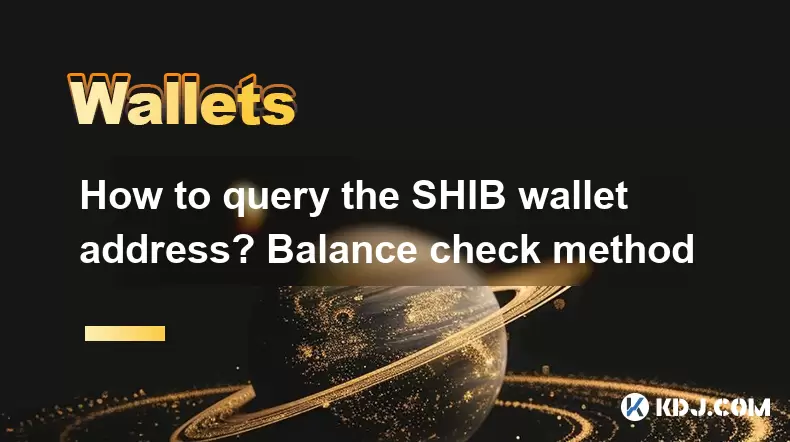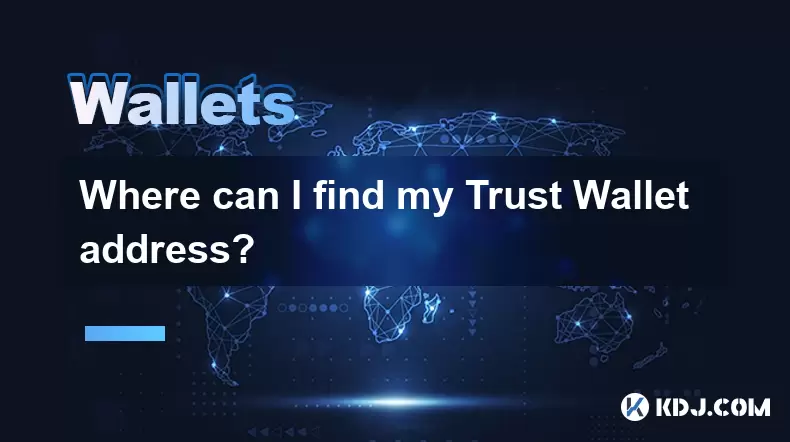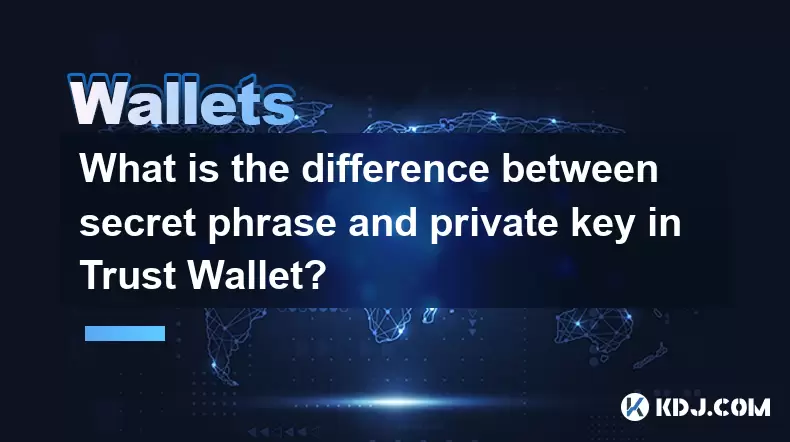-
 Bitcoin
Bitcoin $113900
-1.39% -
 Ethereum
Ethereum $3517
-4.15% -
 XRP
XRP $3.009
1.59% -
 Tether USDt
Tether USDt $0.9997
-0.04% -
 BNB
BNB $766.8
-1.41% -
 Solana
Solana $164.6
-2.38% -
 USDC
USDC $0.9998
-0.02% -
 TRON
TRON $0.3277
0.65% -
 Dogecoin
Dogecoin $0.2023
-1.67% -
 Cardano
Cardano $0.7246
0.05% -
 Hyperliquid
Hyperliquid $38.27
-4.77% -
 Sui
Sui $3.528
-0.52% -
 Stellar
Stellar $0.3890
-0.73% -
 Chainlink
Chainlink $16.16
-2.69% -
 Bitcoin Cash
Bitcoin Cash $539.9
-4.38% -
 Hedera
Hedera $0.2425
-2.00% -
 Avalanche
Avalanche $21.71
-0.97% -
 Toncoin
Toncoin $3.662
5.73% -
 Ethena USDe
Ethena USDe $1.000
-0.02% -
 UNUS SED LEO
UNUS SED LEO $8.964
0.35% -
 Litecoin
Litecoin $107.7
2.33% -
 Shiba Inu
Shiba Inu $0.00001223
-0.40% -
 Polkadot
Polkadot $3.617
-0.97% -
 Uniswap
Uniswap $9.052
-2.49% -
 Monero
Monero $295.1
-3.79% -
 Dai
Dai $0.9999
0.00% -
 Bitget Token
Bitget Token $4.315
-1.85% -
 Pepe
Pepe $0.00001060
0.11% -
 Cronos
Cronos $0.1342
-2.72% -
 Aave
Aave $256.0
-0.87%
How to query the SHIB wallet address? Balance check method
To query your SHIB wallet address and check your balance, use desktop/mobile wallets, exchanges, blockchain explorers, or hardware wallets, ensuring you verify the address and monitor regularly.
May 18, 2025 at 11:28 pm

How to Query the SHIB Wallet Address? Balance Check Method
When dealing with cryptocurrencies like Shiba Inu (SHIB), it's essential to know how to check your wallet address and balance. This process can vary depending on which platform or wallet you are using. Below, we will explore various methods to query your SHIB wallet address and check your balance, ensuring you can manage your assets effectively.
Using a Desktop Wallet
If you are using a desktop wallet like MetaMask or Trust Wallet to store your SHIB, here's how you can find your wallet address and check your balance:
- Open your wallet application on your desktop.
- Navigate to the main dashboard where your assets are displayed.
- Locate the SHIB token in your list of assets. If you don't see it, you may need to add it manually by searching for "Shiba Inu" and adding the token.
- Your wallet address will typically be displayed near the top of the screen or under your list of assets. It's a long string of characters that starts with "0x".
- To check your balance, simply look at the SHIB token entry on your dashboard. The balance will be shown next to the token.
Using a Mobile Wallet
Mobile wallets like Trust Wallet or Coinbase Wallet offer a convenient way to manage your SHIB on the go. Here's how to find your wallet address and check your balance:
- Open your mobile wallet application.
- Go to the wallet section where your cryptocurrencies are listed.
- Find the SHIB token in your asset list. If it's not there, you can add it by searching for "Shiba Inu" and selecting it to add.
- Your wallet address is usually found by tapping on the SHIB token or going to the settings or receive section. Look for the address that starts with "0x".
- Your balance will be displayed next to the SHIB token on the main wallet screen.
Using an Exchange
If you are holding SHIB on a cryptocurrency exchange like Binance or Coinbase, here's how you can find your wallet address and check your balance:
- Log into your exchange account.
- Navigate to the wallet or balances section.
- Locate the SHIB token in your list of assets.
- To find your wallet address, you may need to go to the deposit section for SHIB. Here, you will see an address starting with "0x".
- Your balance is typically displayed in the wallet or balances section next to the SHIB token.
Using a Blockchain Explorer
Blockchain explorers like Etherscan are useful tools for checking your SHIB balance and verifying transactions. Here's how to use them:
- Go to a blockchain explorer website like Etherscan.
- Enter your wallet address in the search bar. Remember, it starts with "0x".
- Once the address is loaded, you will see a summary of your wallet's activity.
- Look for the SHIB token balance in the list of assets associated with your address.
Using a Hardware Wallet
If you are using a hardware wallet like Ledger or Trezor, here's how to find your SHIB wallet address and check your balance:
- Connect your hardware wallet to your computer and open the associated software.
- Navigate to the SHIB token in your list of assets. You may need to add it if it's not already listed.
- Your wallet address will be displayed in the receive or address section. It will start with "0x".
- To check your balance, go to the main dashboard or asset list where the SHIB balance will be shown.
Verifying Your Wallet Address
It's crucial to verify your wallet address to ensure you are not sending or receiving SHIB to the wrong address. Here's how to do it:
- Double-check the address in your wallet application or exchange account. Make sure it starts with "0x" and is the correct length.
- If using a hardware wallet, ensure you are using the correct derivation path to generate the address.
- Compare the address with any previously used addresses to ensure consistency.
Checking Your Balance Regularly
Regularly checking your SHIB balance is important for monitoring your investments. Here are some tips:
- Set up notifications in your wallet or exchange app to alert you of changes in your balance.
- Use a portfolio tracker app that can aggregate balances from multiple wallets and exchanges.
- Manually check your balance at least once a week to stay updated on your SHIB holdings.
Common Issues and Solutions
Sometimes, you might encounter issues when trying to query your SHIB wallet address or check your balance. Here are some common problems and their solutions:
- Token Not Displayed: If SHIB is not showing in your wallet, you may need to manually add the token. Search for "Shiba Inu" and add it to your wallet.
- Incorrect Balance: If your balance seems incorrect, try refreshing your wallet or checking on a blockchain explorer to verify.
- Address Not Recognized: Ensure you are using the correct network (e.g., Ethereum for SHIB) and that you have the correct address.
Frequently Asked Questions
Q: Can I use the same wallet address for different cryptocurrencies?
A: Yes, you can use the same wallet address for different cryptocurrencies if the wallet supports them. However, ensure that the wallet is compatible with the specific cryptocurrency you are dealing with.
Q: How often should I check my SHIB balance?
A: It's recommended to check your SHIB balance at least once a week, but setting up notifications for balance changes can help you stay updated more frequently.
Q: What should I do if my SHIB balance is not showing up on the blockchain explorer?
A: If your SHIB balance is not showing up, ensure that you are using the correct blockchain explorer for the network (e.g., Ethereum for SHIB). Also, check if the transactions have been confirmed and if the wallet address is correct.
Q: Is it safe to share my SHIB wallet address?
A: Yes, it is generally safe to share your SHIB wallet address as it is public information. However, never share your private keys or seed phrases, as these can be used to access your funds.
Disclaimer:info@kdj.com
The information provided is not trading advice. kdj.com does not assume any responsibility for any investments made based on the information provided in this article. Cryptocurrencies are highly volatile and it is highly recommended that you invest with caution after thorough research!
If you believe that the content used on this website infringes your copyright, please contact us immediately (info@kdj.com) and we will delete it promptly.
- DeFi Token Summer Gains: Is Mutuum Finance the Real Deal?
- 2025-08-02 18:30:12
- Bitcoin, Realized Price, and the Top: Are We There Yet?
- 2025-08-02 18:30:12
- Phishing, Wallets, and Stolen Funds: Staying Safe in the Wild West of Crypto
- 2025-08-02 16:30:12
- Rare Coin Alert: Is That 50p in Your Pocket Worth £10,000?
- 2025-08-02 16:30:12
- Arbitrum (ARB) Price Prediction: Oversold Signal or Breakout Imminent?
- 2025-08-02 16:55:36
- Arbitrum (ARB): Navigating Price Dips, PayPal Perks, and the Road Ahead
- 2025-08-02 17:00:12
Related knowledge

What is a watch-only wallet in Trust Wallet?
Aug 02,2025 at 03:36am
Understanding the Concept of a Watch-Only WalletA watch-only wallet in Trust Wallet allows users to monitor a cryptocurrency address without having ac...

How to switch between networks in Trust Wallet?
Aug 02,2025 at 12:36pm
Understanding Network Switching in Trust WalletSwitching between networks in Trust Wallet allows users to manage assets across different blockchains s...

How to check my full transaction history on Trust Wallet?
Aug 02,2025 at 09:24am
Understanding Transaction History in Trust WalletTrust Wallet is a widely used non-custodial cryptocurrency wallet that supports a broad range of bloc...

Why is my Trust Wallet balance zero?
Aug 02,2025 at 03:49am
Understanding Trust Wallet Balance Display IssuesIf you're seeing a zero balance in your Trust Wallet despite knowing you've previously received or se...

Where can I find my Trust Wallet address?
Aug 02,2025 at 06:07pm
Understanding Your Trust Wallet AddressYour Trust Wallet address is a unique identifier that allows others to send you cryptocurrency. It is a string ...

What is the difference between secret phrase and private key in Trust Wallet?
Aug 02,2025 at 09:49am
Understanding the Role of a Secret Phrase in Trust WalletThe secret phrase, also known as a recovery phrase or seed phrase, is a sequence of 12 or 24 ...

What is a watch-only wallet in Trust Wallet?
Aug 02,2025 at 03:36am
Understanding the Concept of a Watch-Only WalletA watch-only wallet in Trust Wallet allows users to monitor a cryptocurrency address without having ac...

How to switch between networks in Trust Wallet?
Aug 02,2025 at 12:36pm
Understanding Network Switching in Trust WalletSwitching between networks in Trust Wallet allows users to manage assets across different blockchains s...

How to check my full transaction history on Trust Wallet?
Aug 02,2025 at 09:24am
Understanding Transaction History in Trust WalletTrust Wallet is a widely used non-custodial cryptocurrency wallet that supports a broad range of bloc...

Why is my Trust Wallet balance zero?
Aug 02,2025 at 03:49am
Understanding Trust Wallet Balance Display IssuesIf you're seeing a zero balance in your Trust Wallet despite knowing you've previously received or se...

Where can I find my Trust Wallet address?
Aug 02,2025 at 06:07pm
Understanding Your Trust Wallet AddressYour Trust Wallet address is a unique identifier that allows others to send you cryptocurrency. It is a string ...

What is the difference between secret phrase and private key in Trust Wallet?
Aug 02,2025 at 09:49am
Understanding the Role of a Secret Phrase in Trust WalletThe secret phrase, also known as a recovery phrase or seed phrase, is a sequence of 12 or 24 ...
See all articles

























































































